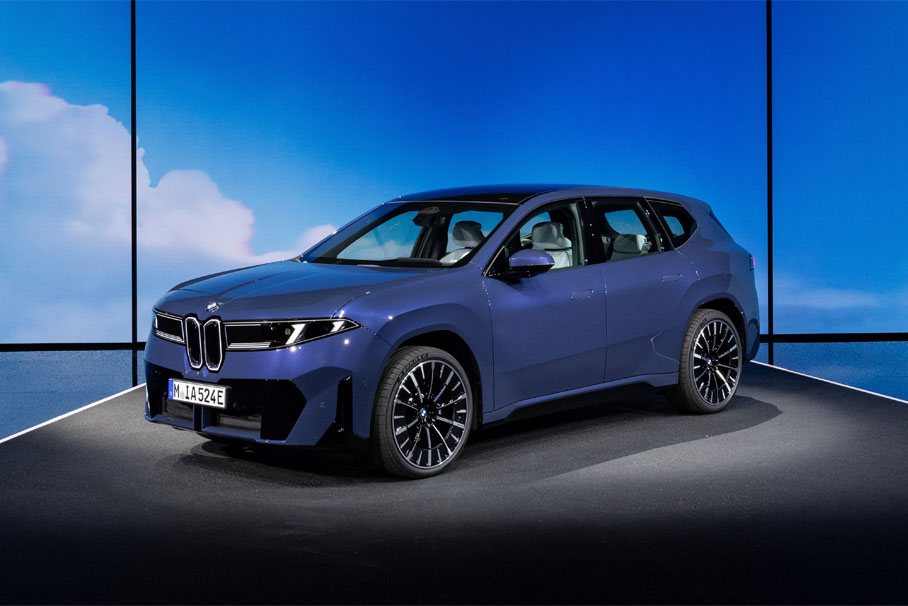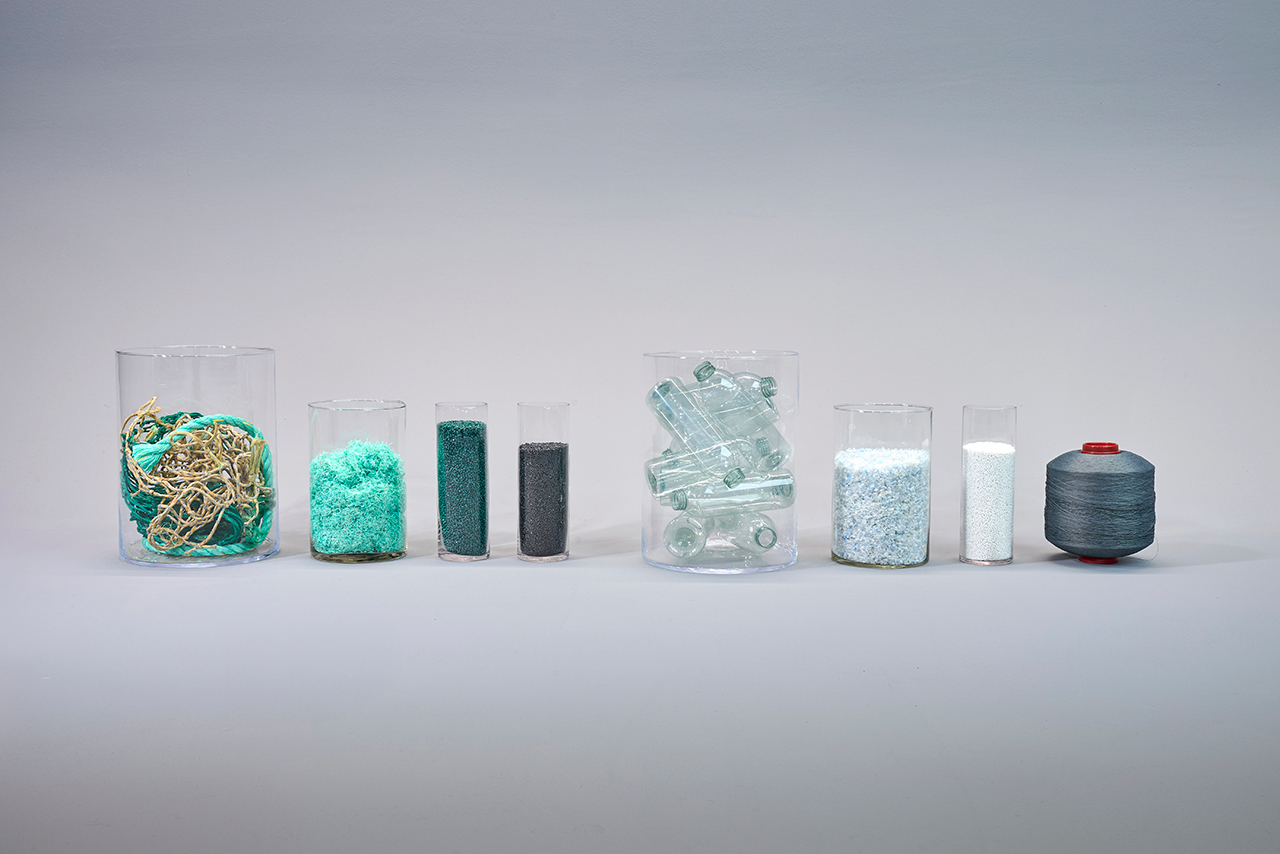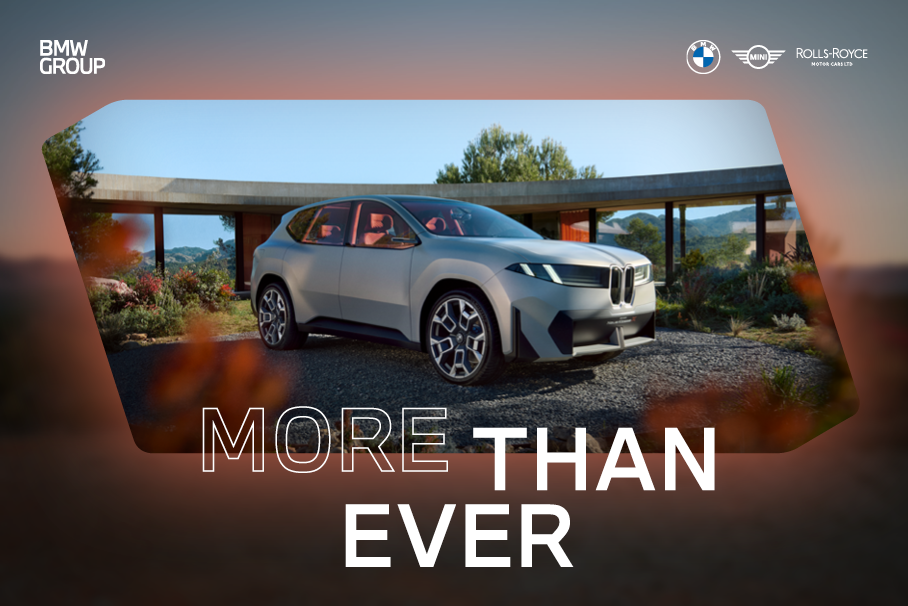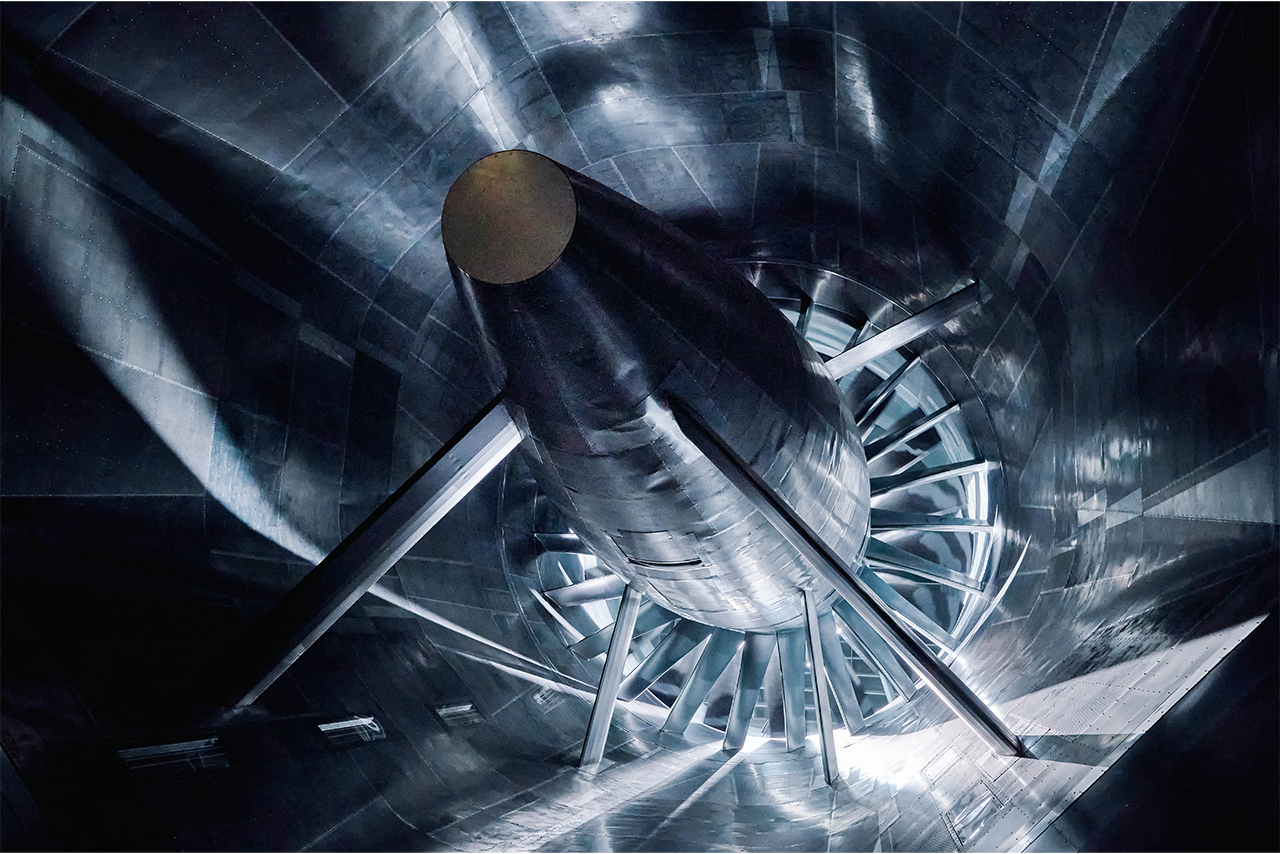Twelve dancers used the facade of the BMW Headquarters as a stage and gave an impressive - vertical - performance at a height of almost 100 metres to mark the building’s 50th anniversary. With their choreography, the ensemble of the American dance project BANDALOOP created a weightless synthesis of the arts in the interplay of architecture and dance.

50 years of the BMW Headquarters: a symbol of pioneering spirit and leadership.
"Momentum Curve": World premiere,
German premiere and spectacular performance.
Half a century ago, the BMW headquarters building was completed on Munich’s Petuelring road. The pioneering architectural icon continues to embody the innovative power of the BMW Group to this day.
The BMW Headquarters is as much a part of Munich as St. Mary’s Church or the Olympic Park. It is a city landmark, recognisable from far away and inextricably associated with the Bavarian capital. It is extremely significant for the BMW Group. The BMW Headquarters building is a milestone in the company’s history and celebrates its 50th anniversary this year on 22 July.
“Built to shape tomorrow.”
When Viennese professor Karl Schwanzer completed this building in 1972 in time for the Olympic Games, he actually created the foundations for an architectural philosophy at BMW that is still applied today. “A building with short distances (indoors) and clear lines (outdoors), a coolly calculated experiment and a milestone of architecture,” as an in-house bulletin in 1973 described it.
The BMW Headquarters is an icon for the BMW Group that not only represents the crowning glory of Karl Schwanzer’s architectural life’s work, but also set standards in modern office architecture in the early 1970s. The Viennese architect combined an impressive façade design with an innovative, flexible spatial concept. An architectural landmark with global appeal for Munich and the BMW Group alike. “Built to shape tomorrow”, as Karl Schwanzer put it. In fact, the Headquarters also represents the company’s pioneering spirit and assertion of leadership. “This building inspires us,” says Oliver Zipse, Chairman of the Board of Management of BMW AG.
The innovative strength of its design represented the BMW company then as it does today and makes the Munich Headquarters building a beacon of tomorrow’s mobility. A symbol of openness, international exchange, peace and interculturality. In spring 2013, a commission of experts included this visionary building complex in the ranks of the fifteen most spectacular corporate headquarters and hailed it as “the coolest and most impressive corporate headquarters in the world”.
 The construction time was only 16 months.
The construction time was only 16 months.
Rapid growth: more space needed for administration.
The creation of the BMW Headquarters came at an auspicious moment for the BMW Group. The company was on a rapid expansion course in the 1960s. The constantly swelling production figures not only meant that the production facilities had to be expanded; more space was also needed for administration. Wilhelm Hermann Gieschen, Board Member for Production from 1961 to 1971, first presented plans to a board meeting on 14 June 1966 for a new administration building to the south of the BMW plant on Dostlerstrasse – directly at the main entrance to the main plant. The plot was undeveloped at this time and used as a car park for BMW employees.
1968 the management launched a competition for the new building and invited eight architects to submit their visions. The specifications were clearly defined: the office building had to be variable in its layout so it could be adapted to prevailing conditions at any time. The architecture of the building was also very important for the management. BMW wanted a generous and visually impressive façade for advertising effectiveness. The building also had to blend in with the surrounding residential areas, the BMW plant and the future Olympic buildings.
 From the BMW Welt, the view falls on the architectural icon.
From the BMW Welt, the view falls on the architectural icon.
 The four cylinders are suspended from a cross-shaped steel structure.
The four cylinders are suspended from a cross-shaped steel structure.
“Disc high-rise” or suspended construction.
Two designs were shortlisted in the end: a conventionally-designed “disc high-rise” and Karl Schwanzer’s design of a futuristic suspended construction, almost 100 metres high, with four cylindrical main elements. The architect had already established his credentials with Vienna’s Philips House and the Museum of the 20th Century.
BMW Sales Director Paul Hahnemann saw the potential of this bold design and lobbied internally for it to be implemented. He had a full-scale model of a complete cloverleaf-shaped floor built on the Bavaria Film site to sway the board of directors, supervisory board and major shareholders in favour of the design. His ingenuity and persuasiveness paid off: in December 1968, the BMW management commissioned its new corporate headquarters to be constructed according to Karl Schwanzer’s designs.
Excavation work began on the former BMW plant car park on 16 July 1970; the official ground-breaking ceremony was on 28 July 1970. A mere 16 months later, the shell of the administration Headquarter was in place complete with façade and window glazing, and interior work was also well advanced. The construction of the corporate headquarters brought 500 workers and 200 architects, engineers and draughtsmen together from twelve nations, putting in a combined total of around 3.5 million working hours. The topping-out ceremony took place on 7 December 1971, and in July 1972, only two years after the start of construction, the exterior of the entire building complex, the grounds and the plantings were completed. The new BMW Headquarters, built at a total cost of 109 million Deutschmarks, was officially inaugurated on 18 May 1973. An incredible achievement by all trades in view of the particularly demanding construction of the building complex.
Built from the top down.
The cloverleaf-shaped building formed the centre of the BMW Headquarters. The four cylinders of the new company headquarters were not on built on a foundation, but hung from a cross-shaped steel construction on the roof. The Headquarters did not grow from the bottom up when it was built; rather, the top floors were built first. The four cylindrical parts were created on the ground, elevated hydraulically and completed in several segments.
Each 19 storeys high, they hang from the central core, the Headquarters shaft. The building has a total of 22 storeys: 18 office floors with two executive floors, four technical floors, the ground floor and basement. At 99.50 metres tall, the Headquarters is only a few centimetres below the maximum building height prescribed in Munich city centre in 1968 – the towers of the Frauenkirche, each 98.60 metres high.
The cloverleaf-shaped floor plan with its circular four office segments on each floor is practical as well as aesthetic. Architect Schwanzer explained this distinctive shape as being consistent with modern office working practice. The cloverleaf structure offers short distances between workstations, the best possible organisation and communication between individual office departments and ideal flexibility of the space layout.
 The BMW Headquarters is inseparable from the silhouette of Munich.
The BMW Headquarters is inseparable from the silhouette of Munich.
 The building complex appears visionary even after five decades.
The building complex appears visionary even after five decades.
The architecture promotes close collaboration and flat hierarchies.
Today, around 1,500 BMW Group employees work in the Headquarters building, mainly in open-plan offices. Two corridors lead crosswise through the floor core and connect the individual quadrants with each other. This architecture promotes close cooperation and flat hierarchies by keeping distances short. Individual offices are few and far between: all employees, from the trainee to the head of department, usually sit in an open-plan office.
The building was completely renovated and modernised in 2004 to bring it up to date with the constantly changing world of work. The exterior image remained unchanged, however, on closer examination, all façade elements were cleaned, newly soundproofed and insulated, and more than 2,300 window panes were replaced. There is an improved supply of light and fresh air to the workplaces inside as well as a completely new lift system.
The BMW Group can look back on a decades-long tradition of cooperation with world-famous architects. As early as Karl Schwanzer's construction of the group's headquarters, the company consciously opted for a dynamic type of construction, which was later to continue with trend-setting buildings by Zaha Hadid with her BMW Group Plant Leipzig (2005), BMW Welt in Munich by Coop Himmelb(l)au (2007) and Sir Nicholas Grimshaw's Rolls-Royce plant in Goodwood (2003). In 2022, Rem Koolhaas' Rotterdam-based OMA office and the Danish architects of 3XN were commissioned by BMW to transform its Munich headquarters and jointly shape urban production for the future.
Large-format monochrome paintings "Red," "Yellow" and "Blue," commissioned from Gerhard Richter in 1972 and created especially for the foyer, form the starting point of the BMW Group's global cultural commitment. They will be restored as part of the anniversary celebrations and then re-presented in the hanging originally intended by the artist.
The BMW Tower’s culture-defining character continues to offer its employees a unique experience even in its 50th year. It represents continuity, transformation and sustainability in equal measure and is symbolic of the BMW Group’s open and forward-looking corporate culture.
 The open structure proved to be the optimal solution for the offices at that time.
The open structure proved to be the optimal solution for the offices at that time.
 It has remained so to this day.
It has remained so to this day.













